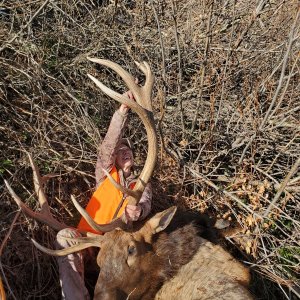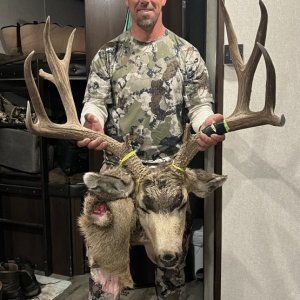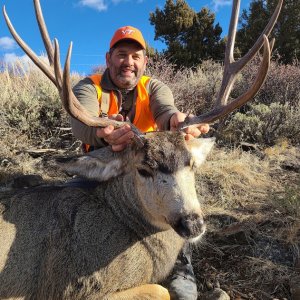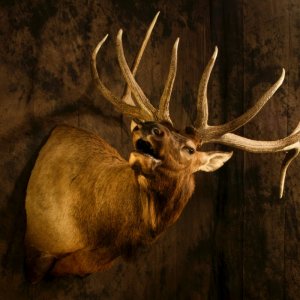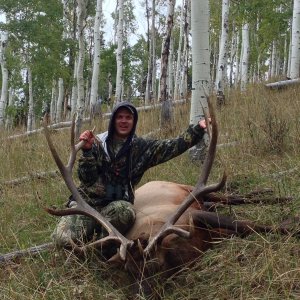You are using an out of date browser. It may not display this or other websites correctly.
You should upgrade or use an alternative browser.
You should upgrade or use an alternative browser.
Guide to warm weather meat care
- Thread starter eelgrass
- Start date
hawkbill
Long Time Member
- Messages
- 3,186
Great video, good common cents. I took a trip last year and looked into this heavily for I would not be able to come out for 10 days and did not want meat spoiled. I took a thermometer and citrus acid and a small spray bottle. Goggle citrus acid and meat care. I also researched game bags, did you know some game bags will enhance meat spoilage by how there stitched and how tight of weave is and letting air in and out . There is actually a video where they test meat rotting in the top end game bags. I thought my Kuiu were top shelf, I switched to Argali meat bags for what I believe to get 3 or 4 more days out in the field in warm weather. There are also several Alaskan top end meat bags and I know some one is making anti bacterial meat bags. Good Luck, have fun and kill a good one!
Rie bread
Very Active Member
- Messages
- 1,338
Thanks for posting! I was taught to debone which watching this will make me reconsider- especially if it’s close to the car.
But when we did de bone we would put a twist in the game bag between chunks of meat to help cool it and keep the chunks separate. Never considered the contamination factor of stacked cuts of meat so we got lucky there
But when we did de bone we would put a twist in the game bag between chunks of meat to help cool it and keep the chunks separate. Never considered the contamination factor of stacked cuts of meat so we got lucky there
eelgrass
Long Time Member
- Messages
- 32,037
That goes into scientific depth and interesting. Citric acid I never knew about.Here’s another good one I was watching this morning. This guys gets a bit more scientific on the subject.
If it's low humidity the meat from a blacktail will get a dry crust over it and will keep several days in the shade. We take the game bags off at night to get maximum air flow. Just be sure to put a clean bag on before the flies come out. Big animals are a whole other ball game.
rmanwill
Long Time Member
- Messages
- 6,317
Amazing how much and how fast the heat leaves the meat when quartered, skinned and hung in the shade.
Leaving on bone sure helps in the pack out. Stiff chucks with bone rather then a loss jiggling mass of meat.
I have also in the past on August and September archery hunts hung meat at night to get cooled down and in morning put inside of tent spread out and covered with several sleeping bags to insulate and keep the cold in. Middle of after noon could reach under and meat was still very cold.
Leaving on bone sure helps in the pack out. Stiff chucks with bone rather then a loss jiggling mass of meat.
I have also in the past on August and September archery hunts hung meat at night to get cooled down and in morning put inside of tent spread out and covered with several sleeping bags to insulate and keep the cold in. Middle of after noon could reach under and meat was still very cold.
eelgrass
Long Time Member
- Messages
- 32,037
I forgot about the sleeping bag trick. It absolutely works.Amazing how much and how fast the heat leaves the meat when quartered, skinned and hung in the shade.
Leaving on bone sure helps in the pack out. Stiff chucks with bone rather then a loss jiggling mass of meat.
I have also in the past on August and September archery hunts hung meat at night to get cooled down and in morning put inside of tent spread out and covered with several sleeping bags to insulate and keep the cold in. Middle of after noon could reach under and meat was still very cold.
LIK2HNT
Long Time Member
- Messages
- 4,190
Yep, nothing like sleeping in bear country in a sleeping bag that smells of elk!!I forgot about the sleeping bag trick. It absolutely works.
HIcountryman
Very Active Member
- Messages
- 1,423
Made me rethink the question of whether to debone meat or not... Anybody know off top of their heads how much an elk rear leg/femur weighs?
hawkbill
Long Time Member
- Messages
- 3,186
You use your buddies sleeping bagYep, nothing like sleeping in bear country in a sleeping bag that smells of elk!!
Calbuck
Active Member
- Messages
- 390
Cow elk rear bone in is around 60-80 lbs depending on size of elk..big bull prob more like 100-110? Maybe more. Just the bone itself? I’d guess 10-15 lbsMade me rethink the question of whether to debone meat or not... Anybody know off top of their heads how much an elk rear leg/femur weighs?
Timely topic and something I've been pondering with upcoming OIL hunt starting Aug 31. 

https://www.yumpu.com/en/document/read/35370861/elk-carcass
A 2018 University of Wyoming study titled The Elk Carcass found that the average bull elk harvested in Wyoming yields 218 pounds of meat, while the average cow elk yields 169 pounds. The study also broke down the weight of the elk from live to field-dressed to boned-out.
Here are some other findings from the study:
- A six-year-old bull elk that has been field-dressed weighs around 500 pounds.
-Boning the meat in the field can cut the weight in half.
-Field-dressed weight is about two-thirds of the total body weight.
-The cleaned dressed weight (with the head, forelegs, and hide removed) is just over 50% of the live weight.
-To estimate the live weight, you can roughly double the skinned, field-dressed carcass.
-The live weight is roughly three times the weight of the processed meat, assuming there's little to no harvest damage. For example, 500 pounds of meat would come from a 1500-pound elk.
"For instance, the average weight of a bone in hind quarter of an elk is 65 pounds and average weight of a bone in front shoulder is 50 pounds. So all added up that is 230 pounds of bone in meat (that doesn’t include the rest of the elk of course). On average each leg bone weighs about 8 pounds."
Holeh, you're shooting some whoppers...are we talking actual weight or what we tell our co-workers on Monday?Cow elk rear bone in is around 60-80 lbs depending on size of elk..big bull prob more like 100-110? Maybe more. Just the bone itself? I’d guess 10-15 lbs
https://www.yumpu.com/en/document/read/35370861/elk-carcass
A 2018 University of Wyoming study titled The Elk Carcass found that the average bull elk harvested in Wyoming yields 218 pounds of meat, while the average cow elk yields 169 pounds. The study also broke down the weight of the elk from live to field-dressed to boned-out.
Here are some other findings from the study:
- A six-year-old bull elk that has been field-dressed weighs around 500 pounds.
-Boning the meat in the field can cut the weight in half.
-Field-dressed weight is about two-thirds of the total body weight.
-The cleaned dressed weight (with the head, forelegs, and hide removed) is just over 50% of the live weight.
-To estimate the live weight, you can roughly double the skinned, field-dressed carcass.
-The live weight is roughly three times the weight of the processed meat, assuming there's little to no harvest damage. For example, 500 pounds of meat would come from a 1500-pound elk.
"For instance, the average weight of a bone in hind quarter of an elk is 65 pounds and average weight of a bone in front shoulder is 50 pounds. So all added up that is 230 pounds of bone in meat (that doesn’t include the rest of the elk of course). On average each leg bone weighs about 8 pounds."
Last edited:
Calbuck
Active Member
- Messages
- 390
Well I weighed one on my scale that is relatively accurate..depends how far down you dress it maybeTimely topic and something I've been pondering with upcoming OIL hunt starting Aug 31.
Holeh, you're shooting some whoppers...are we talking actual weight or what we tell our co-workers on Monday?
https://www.yumpu.com/en/document/read/35370861/elk-carcass
A 2018 University of Wyoming study titled The Elk Carcass found that the average bull elk harvested in Wyoming yields 218 pounds of meat, while the average cow elk yields 169 pounds. The study also broke down the weight of the elk from live to field-dressed to boned-out.
Here are some other findings from the study:
- A six-year-old bull elk that has been field-dressed weighs around 500 pounds.
-Boning the meat in the field can cut the weight in half.
-Field-dressed weight is about two-thirds of the total body weight.
-The cleaned dressed weight (with the head, forelegs, and hide removed) is just over 50% of the live weight.
-To estimate the live weight, you can roughly double the skinned, field-dressed carcass.
-The live weight is roughly three times the weight of the processed meat, assuming there's little to no harvest damage. For example, 500 pounds of meat would come from a 1500-pound elk.
"For instance, the average weight of a bone in hind quarter of an elk is 65 pounds and average weight of a bone in front shoulder is 50 pounds. So all added up that is 230 pounds of bone in meat (that doesn’t include the rest of the elk of course). On average each leg bone weighs about 8 pounds."
Deerlove
Long Time Member
- Messages
- 6,127
I would guess 20 lb I guess I kind of like the idea of hanging it with a quarter and then deboning it last minuteMade me rethink the question of whether to debone meat or not... Anybody know off top of their heads how much an elk rear leg/femur weighs?



